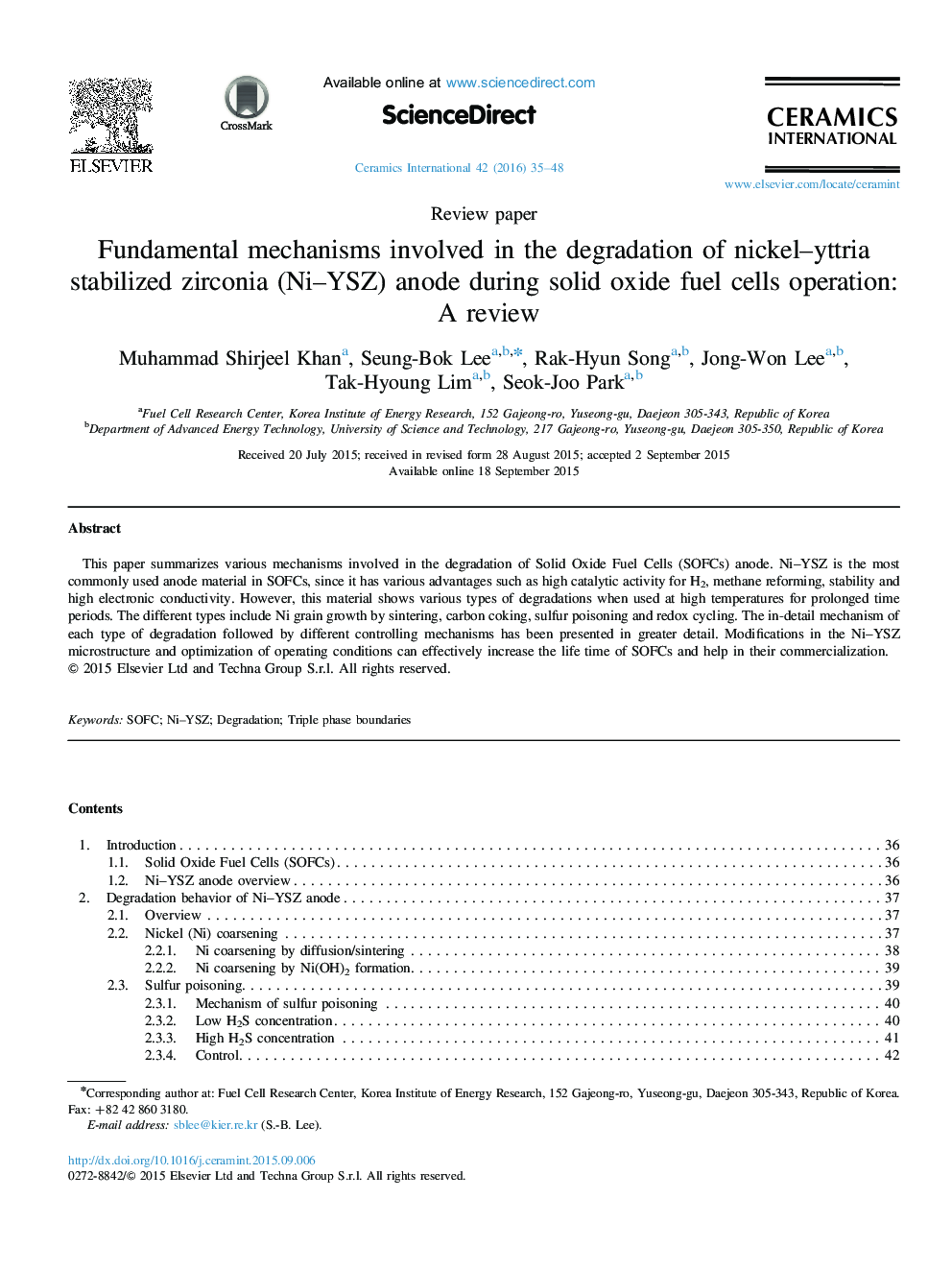| Article ID | Journal | Published Year | Pages | File Type |
|---|---|---|---|---|
| 1459403 | Ceramics International | 2016 | 14 Pages |
Abstract
This paper summarizes various mechanisms involved in the degradation of Solid Oxide Fuel Cells (SOFCs) anode. Ni-YSZ is the most commonly used anode material in SOFCs, since it has various advantages such as high catalytic activity for H2, methane reforming, stability and high electronic conductivity. However, this material shows various types of degradations when used at high temperatures for prolonged time periods. The different types include Ni grain growth by sintering, carbon coking, sulfur poisoning and redox cycling. The in-detail mechanism of each type of degradation followed by different controlling mechanisms has been presented in greater detail. Modifications in the Ni-YSZ microstructure and optimization of operating conditions can effectively increase the life time of SOFCs and help in their commercialization.
Related Topics
Physical Sciences and Engineering
Materials Science
Ceramics and Composites
Authors
Muhammad Shirjeel Khan, Seung-Bok Lee, Rak-Hyun Song, Jong-Won Lee, Tak-Hyoung Lim, Seok-Joo Park,
